Is your motor Synchronous?
(04/22/03)
A synchronous rotary spark gap provides a way to fire the Tesla Coil at the exact same position (phase) of the AC wave form, every time. This allows the capacitor to charge up to the exact same voltage (typically the maximum is used), before the gap is fired. The break rate of the spark gap is exactly 120 times per second (for 60Hz, 120 BPS). This results in maximum consistent bang size and a very tonal sound from the Tesla Coil (like 120 Hz -ish).
Synchronous motors are hard to find. Many people buy a non-synchronous motor and make it synchronous. This is done by taking the motor apart, and grinding flats on the armature. For an 1800 RPM motor, start with something close (1725, 1750, etc), and make 4 flats spaced 90 degrees apart from each other. For a 3600 RPM motor, start with something close (3450) and grind 2 flats spaced 180 degrees apart. Easy if you have a milling machine. A bit harder if you only have a grinder.
Here is a method to find out if your motor is really synchronous.
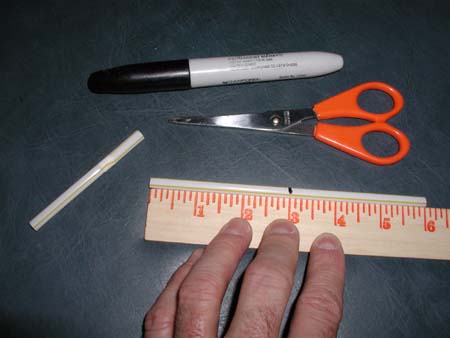
Get a light-colored plastic straw. Cut the bendy part off (if there is one). Mark the center.
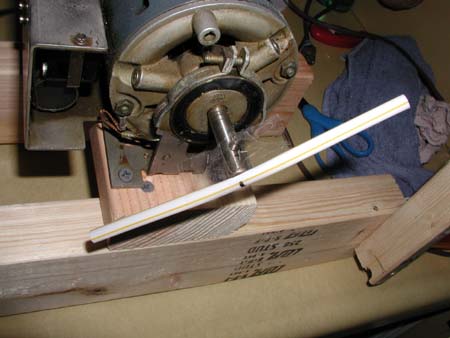
Attach the straw to the motor shaft with really good tape. This shows the shaft position.
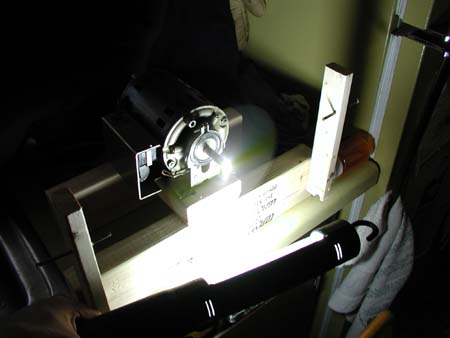
Turn on the motor and shine a fluorescent light (the old ballast kind) on the straw.
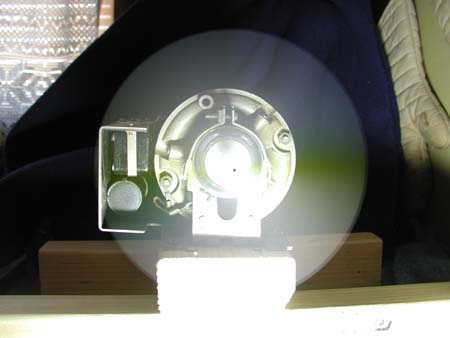
A pattern of 2 stationary dark regions (at 3 and 9 o'clock positions, in this case) indicate we have a synchronous 3600 RPM motor.
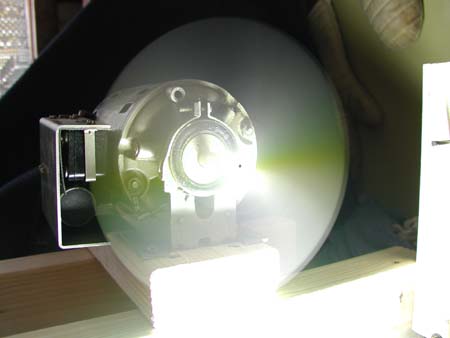
A slightly different angle. Note the bands are still in the same position.
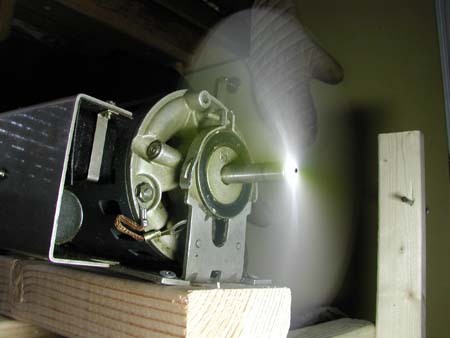
Yet another interesting angle. Bands still at 3 & 9 o'clock.
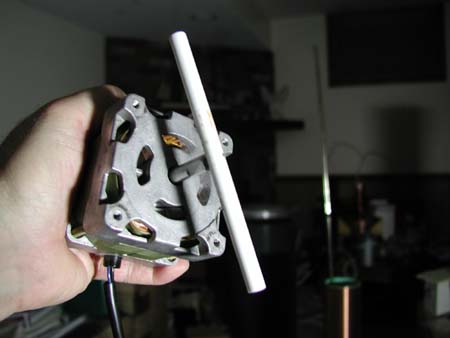
Now let us try an 1800 RPM synchronous motor.
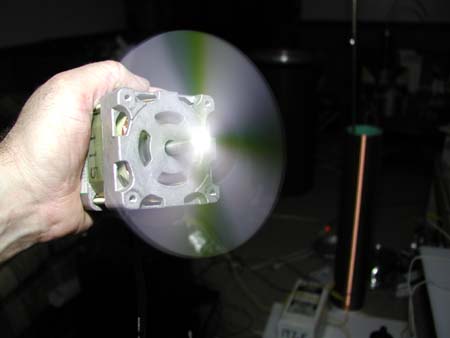
A pattern of four stationary dark bands indicate we have a synchronous 1800 RPM motor.
Here is a video of a test of the 1800 RPM Oriental Motor for your viewing pleasure.
syncmotor.mpg
3.0 MB
If you purchased a motor that calls itself synchronous, you should cycle power a few times, to ensure the bands stay in the exact same position every time. If not, then you have a motor that is hysteresis type synchronous. The only difference here is that the motor will synch to a different position every time its powered up. It still works, except you have to tune each time you run your coil. Tuning can be as easy as flicking power switch on/off until the correct position lines up (using strobe light), using John Freau's motor phase controller set-up, or rotating motor in cradle. But it is a pain.
If you actually ground flats on your motor, you can be assured that it is now synchronous. You might want to slowly crank up the voltage with a variac to see how high you have to get before it goes synchronous. This is kinda cool, because you can see the motor NOT being synchronous (dark bands spinning around), and a kind of uncomfortable sound from the motor. It is hunting for the "lock", but can't hold it. But then, as it becomes synchronous and "locks", it sounds very sure of itself. Experience it a few times, and you will be able to tell "synchronous" from the sound alone.
The lower the voltage you "lock" at, the better. Understand that you are just spinning a straw here. Which I am sure you appreciated, if you were going at 3600 RPM. It is fast, and if things fly off, you don't want much mass involved. Although I have heard of a piece of straw going through a tree in a tornado. Hmmm.
When you attach your REAL rotor to the motor, the load will be much higher. If it is too much load for the motor, you should be able to tell by the sound. If not, you can put white tape strips on the rotor, and use your fluorescent light trick again (just to be sure).